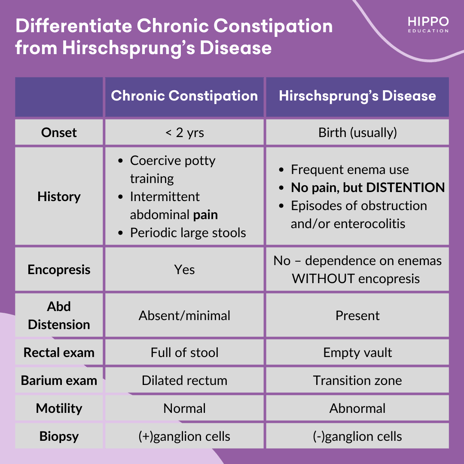Unraveling the Case of a Constipated Toddler: Hirschsprung’s Disease

In this month’s episode of Peds RAP, we discuss the case of a two-year-old child that presented with a history of constipation and abdominal distention. The journey to diagnosis uncovered a complex medical condition - Hirschsprung’s Disease.
So, what exactly is Hirschsprung’s Disease? Also known as congenital aganglionic megacolon, this condition is the absence of ganglion cells, starting distally in the rectum and extending proximally to the large intestine. This absence may occur in variable amounts which leads to a variable presentation.
While Hirschsprung’s Disease is often seen in the newborn period (think delayed passage of meconium), it can present later in cases of low-segment involvement. Common symptoms of Hirschsprung’s Disease may include constipation, abdominal distention, feeding intolerance, and episodes of intestinal obstruction. Differential diagnosis considerations include chronic constipation, hypothyroidism, electrolyte abnormalities, structural GI or rectal issues, spinal cord issues, botulism, and abdominal masses.
We all know that constipation is common in kids - check out the table below to help you differentiate chronic constipation from Hirschsprung’s Disease!

To hear the full discussion on the presentation, diagnosis and management of Hirschsprung’s disease, check out this month’s podcast episode, written summary, and discussion. If you haven’t subscribed to Peds RAP yet, now is a great time!
Practice-Changing Education
Experience education that goes beyond theory. Explore Hippo Education’s offerings below.